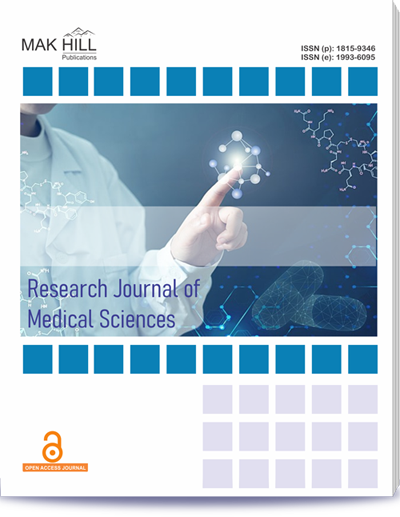
Research Journal of Medical Sciences
ISSN: Online 1993-6095ISSN: Print 1815-9346
148
Views
24
Downloads
Abstract
Hysterectomy is the definitive treatment for a variety of benign pelvic pathologies such as leiomyoma, dysfunctional uterine bleeding (DUB), persistent pelvic discomfort, endometriosis, adenomyosis, uterovaginal prolapse and, in some circumstances, genital tract cancers. The goals of this study were to investigate the range of pathological abnormalities in hysterectomy specimens and to correlate the preoperative diagnosis with the histological diagnosis. This descriptive and observational study was conducted in the histology section of the pathology department of a tertiary care hospital in Gujarat. Except for clinical indications relating tubal or ovarian disease, all hysterectomy specimens received at the histopathology section between January 2021 and December 2022 were included in this investigation. The most common kind of hysterctomy, with 160 cases (79.6%), was total abdominal hysterectomy. Adenomyosis (26.4%) and fibroid (23.9%) were the most common clinical reasons for hysterectomy. The most prevalent observation in endometrium was proliferative phase of endometrial (59.7%), while leiomyoma (45.5%) was seen in myometrium. In total, 5.97% of cases had an incidental histological diagnosis. This study offers a broad range of histological patterns of lesions in hysterectomy specimens. Histopathological examination of hysterctomy specimens should be required even if the gross appearance is normal, as few abnormalities are discovered to be pure incidental findings.
How to cite this article:
Varsha Khant, Nasrin Qureshi, Asha Gunjalia and Shetal Chauhan. Histopathological Spectrum of Lesions of Hysterectomy Specimens in Tertiary Care Hospital: Two Year Retrospective Study.
DOI: https://doi.org/10.36478/10.59218/makrjms.2023.12.385.390
URL: https://www.makhillpublications.co/view-article/1815-9346/10.59218/makrjms.2023.12.385.390